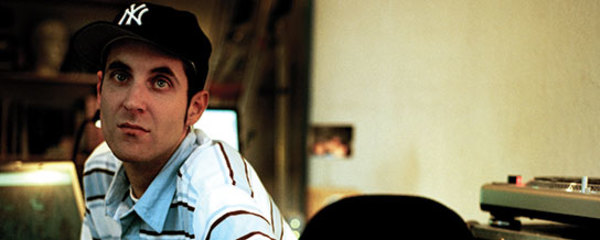Nicolay In the Studio
The Foreign Exchange’s Connected was one of 2004’s biggest surprises, simply because of how it […]
Nicolay In the Studio
The Foreign Exchange’s Connected was one of 2004’s biggest surprises, simply because of how it […]

The Foreign Exchange’s Connected was one of 2004’s biggest surprises, simply because of how it was produced. The hip-hop record was proof-positive of how far the internet has taken recorded music. Raleigh, NC-based rapper Phonte (of Little Brother) and Dutch DJ/producer Nicolay concocted an entire album without seeing each other in person or even speaking on the telephone. They met through an Okay Player message board and began swapping audio files across the Atlantic via Instant Messenger, eventually piecing together a seamless record. When XLR8R conversed with Nicolay over IM, he was finishing up his solo full-length Here (to feature artists such as Phonte, Black Spade, Jada Avenue, and Darien Brockington), at his home studio in Utrecht, Netherlands.
XLR8R: What’s the first piece of equipment in your studio that you’d brag about?
Nicolay: My Roland Juno 60 synthesizer. If I am not mistaken, it’s from like, ’83 or something, but the sound is incredible. No MIDI; it’s analog as it can be. Can’t go wrong for pads and basses, man. I used that one a lot [on the new record], along with my [Yamaha] Motif 7 for the more “conventional” sounds and I ended up using my MicroKorg here and there.
What’s the best aspect of the Juno?
The sound, mainly its loud low [and] high; also, the chorus feature is crazy-it makes me sound [like I have] totally wide stereo. Plus, it has a big-range keyboard. There is a [new] track called “My Story” that actually has a lot of both Juno and MicroKorg on it; the track has a more synthesized background, but has a lot of more organic keyboards like piano, Rhodes, and organ on the front.
How different is the production on Here from Connected, besides not emailing the tracks back and forth?
The new record displays a wider variety of sounds-both my extremes if you will. The first tracks that people got to know from me were boom-bappish, sample-driven hip-hop such as “Light It Up,” and when the Foreign Exchange record dropped it was generally perceived as mellow-but I have both sides in me. The new record has a lot of the musical depth that Foreign Exchange had, but it has a lot of what you could call “bangers” as well and I think everything in between; some of it I could even classify as rock.
You definitely have grounding in modern hip-hop and R&B. How did you learn the studio production for those styles?
Honestly, as far as hip-hop and R&B go, I think I have learned to make those genres my own by just doing it. My huge advantage is that I am a classically trained musician. Ironically enough, I studied classical music for about seven years, while I would, at the same time, eat and drink hip-hop and jazz. In general, knowing how melody and harmony work and knowing how to play instruments will pretty much enable you to pick up any genre.
On the new record, did you play most of the music or sample it?
This time it really is a 50/50 [situation]. I ended up playing a lot more instruments even than on the Foreign Exchange album, but at the same time I sampled more. But even when I sample, I always play instruments on top-like I always play basslines on my bass guitar or the Juno.
It’s interesting that I can’t tell what is sampled and what is not.
You can’t? That’s great. Yeah, that’s what I try to do: mask the samples or make it into truly a new product.
Besides the Juno, what other instruments do you use?
[Vega] bass guitar and [an Ibanez] electric guitar, I sometimes use an acoustic too. Let’s see: turntables and Numark mixer, Yamaha Motif 7, Yamaha DX11, and I used some other stuff here and there that I can’t remember.
Where did you record the vocalists?
Parts were done during sessions that we had in NYC. Others were recorded in their respective cities, Foreign Exchange-style. Yesterday I finished the track that features Darien Brockington after they IM’d us the vocals on Thursday that they recorded on Wednesday. That’s how fast the [turnaround] can be sometimes.
What software do you use?
I use ModPlug for sequencing and ProTools 6.4 for multi-tracking, recording, and mixing. And I use SoundForge 5.0 for editing.
What effects do you often use?
I think the most used effect has got to be compression. Other than that, I am a big fan of the Frohmage plug-in. I use reverb here and there, but sparsely. Frohmage is a plug-in that beefs up your sound using filter banks-it’s incredible.

